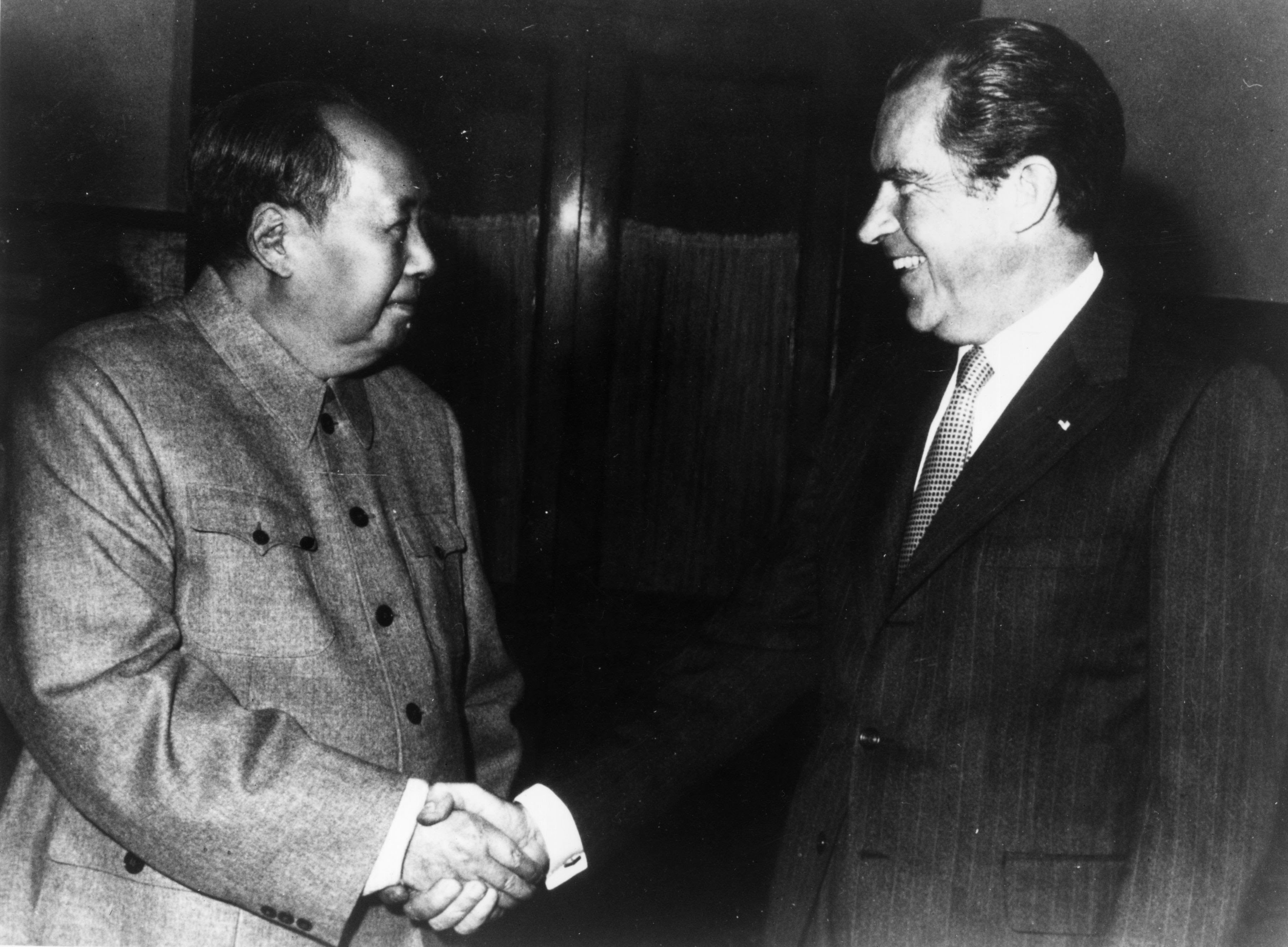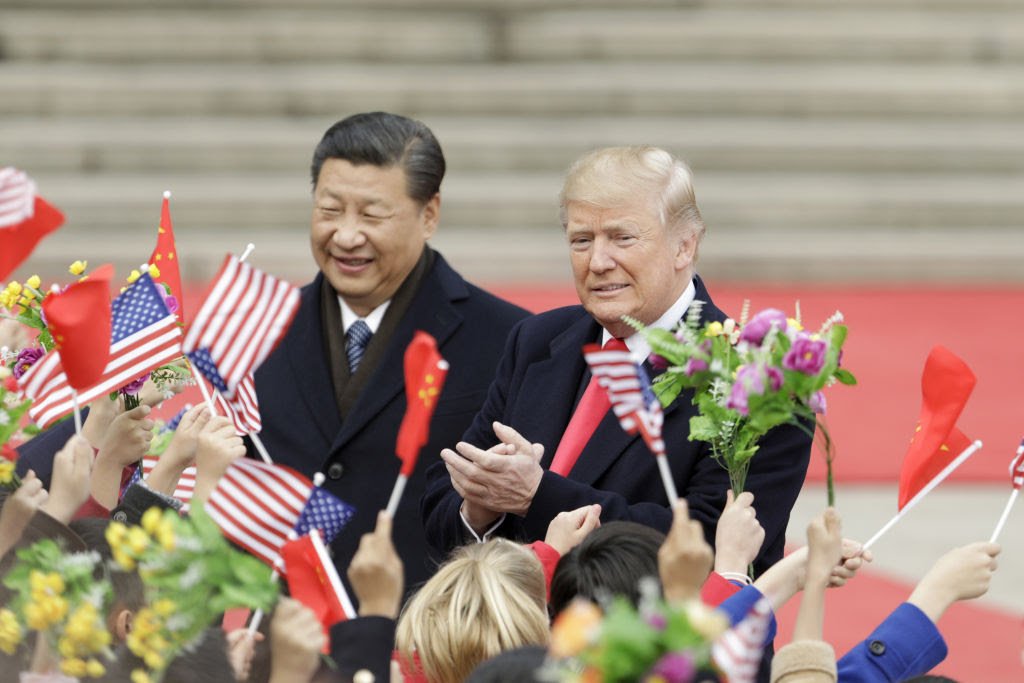
Date: 2026-01-01 Page is: DBtxt003.php txt00019246
Media News
Bloomberg ... This week in the New Economy
Several stories including Trump reversing the Nixon initiative to open a US relationship with China
Peter Burgess

Chinese leader Mao Zedong, left, shakes hands with U.S. President Richard Nixon in Beijing in 1972. Source: Keystone/Hulton Archive
This week in the New Economy
- China’s red-hot IPOs are minting a new billionaire every week.
- Argentina is importing bank notes to deal with 40% inflation.
- Gold is opening a record gap with emerging currencies.
- Morocco is using the pandemic to roll back democracy.
- European Union urges Turkey to reverse Hagia Sophia decision.
These hardliners may also reckon they don’t have much time left to act. While the strategy of seeking a dangerous confrontation with China could help Trump rally his right-wing devotees come November, it may not, so his aides figure better to do it while they can. In his speech at the Nixon library, Pompeo urged other countries and the Chinese people to rise up against a “bankrupt totalitarian ideology.” He stopped just shy of calling for regime change.
But as the renowned Harvard Sinologist Ezra Vogel points out, this kind of rhetoric is having the opposite effect in China: it is stoking nationalism at U.S. expense, even among those who know and like Americans and wish to see a more democratic China, one that plays by international rules.
As for Pompeo’s efforts to build an anti-China global coalition, he’d likely have an easier time if his boss wasn’t regularly lashing out at America’s traditional allies and trashing international institutions. Besides, as we now know in colorful detail from John Bolton’s book about his recent stint in the White House, Trump has no interest in an ideological fight with China. His singular goal is reelection—and picking a fight might just help.

U.S. President Donald Trump, right, and Xi Jinping, China’s president, greet attendees waving American and Chinese national flags during a welcome ceremony outside the Great Hall of the People in Beijing on Nov. 9, 2017. Photographer: Bloomberg/Bloomberg History seems to have proven Nixon right. As U.S. defenders of his engagement policy argue, an isolated China might have continued to export violent revolution, sought to proliferate nuclear weapons and send waves of impoverished refugees across its borders. Instead, it’s now the world’s second largest economy, and whether or not you believe the recent Chinese GDP spurt is real, the trend is clear: China is on course to overtake the U.S. economy in aggregate size. The coronavirus, and America’s failure to control it, has only accelerated the timeline. In a lengthy essay this week in the London Review of Books, the economist Adam Tooze puts Nixon’s legacy into perspective. The U.S. and China are not in a “new Cold War,” he argues: In Asia, the U.S. never prevailed in the first one. While the West was celebrating the “end of history” with the collapse of the Berlin Wall in 1989, the Chinese leadership was cracking down on pro-democracy protesters at Tiananmen Square, a violent event that spurred a shaken Communist Party to preserve its rule by building China into an economic superpower. It is this China that the U.S. now confronts, a global behemoth that—as Tooze puts it—has embarked upon a “gigantic and novel social and political experiment enrolling one-sixth of humanity—a historic project that dwarfs that of democratic capitalism in the North Atlantic.” To Pompeo, this China may well be the “Frankenstein” Nixon mused about. But then, as now, the alternative to engagement is a world of disorder. According to Tooze, the only question “is how rapidly we can move to détente, meaning long-term co-existence with a regime radically different from our own.” __________________________________________________________ Like Turning Points? Subscribe to Bloomberg All Access and get much, much more. You’ll receive our unmatched global news coverage and two in-depth daily newsletters, The Bloomberg Open and The Bloomberg Close. Can global trade be saved? On top of the U.S.-China trade war, the novel coronavirus is closing borders all over the world, blocking the flow of people, goods and services. Register now to join Andrew Browne on Tuesday, July 28, at 10 a.m. EDT as he discusses the future of the multilateral trading system and whether it can survive the global pandemic. Download the Bloomberg app: It’s available for iOS and Android. Before it’s here, it’s on the Bloomberg Terminal. Find out more about how the Terminal delivers information and analysis that financial professionals can’t find anywhere else. Learn more.